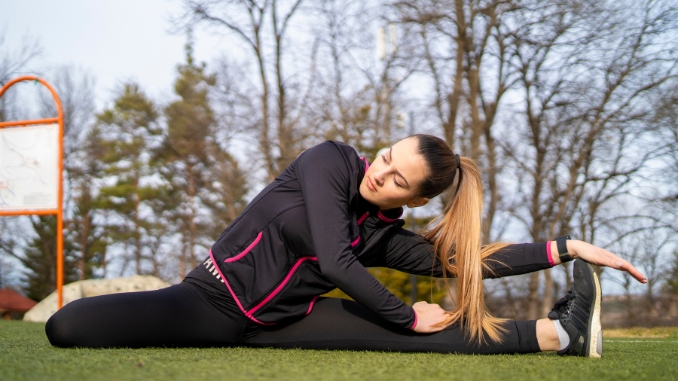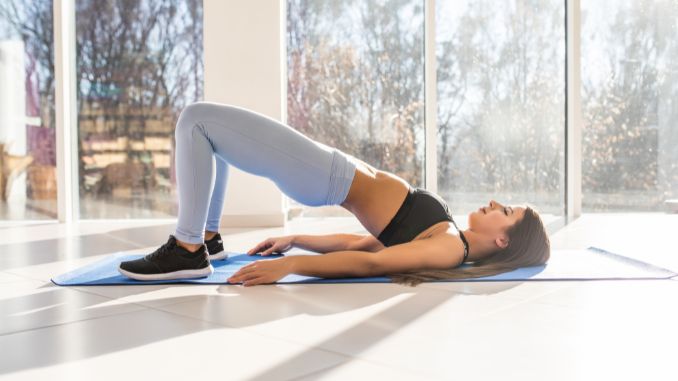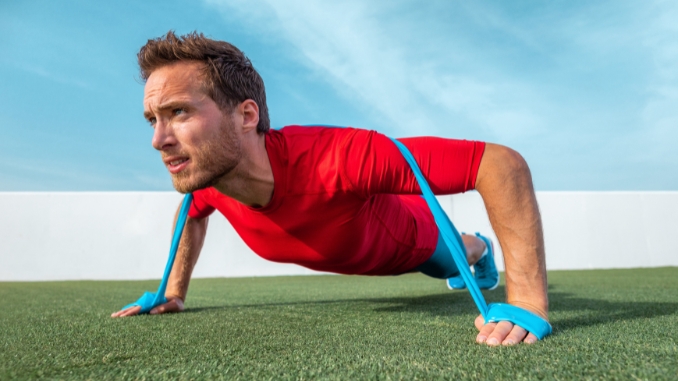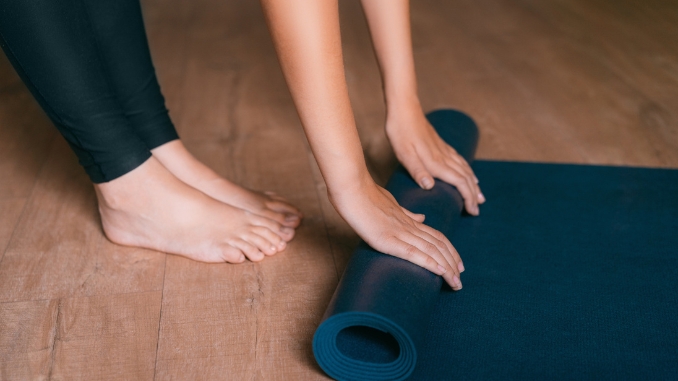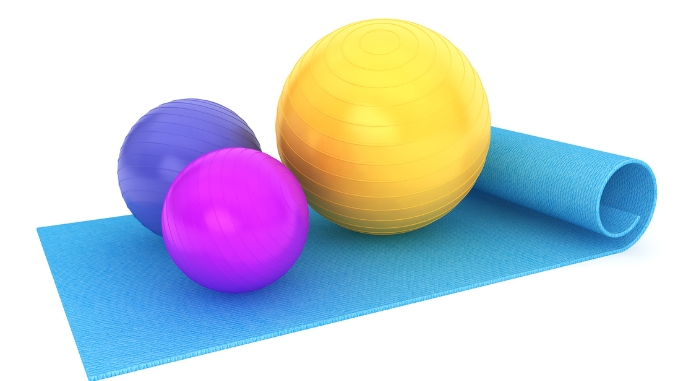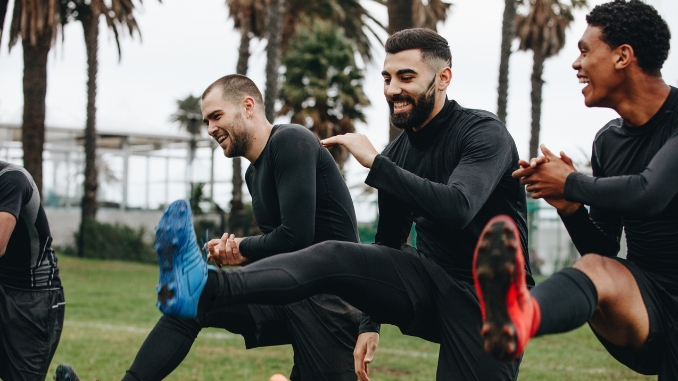Understanding muscles and their functions is vital for optimizing movement, preventing injuries, and enhancing overall physical well-being. It's akin to having a roadmap for your body's intricate machinery. Take the Gracilis muscle, for example—it's a key player in thigh movement. Identifying its role in adduction and knee flexion highlights its importance in walking, running, and sports. Knowing this enables targeted training and rehabilitation, ensuring the Gracilis and its companions work harmoniously. So, let’s dive into an anatomical lesson and practical guide to better health and performance through simple Gracilis Stretch Exercises.
Exploring the Gracilis Muscles
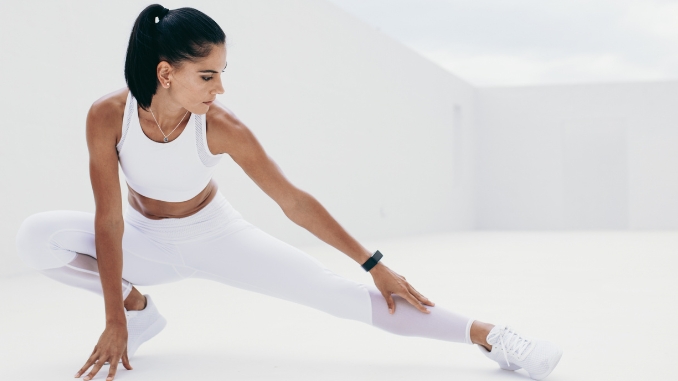
Before diving into workouts, it's crucial to grasp the whereabouts of the Gracilis muscles and how to handle them.
The Gracilis muscle, a member of the adductor muscle group, is situated in the inner thigh, running as a long, slender muscle from the pubic bone to the tibia (shinbone). In the adductor group, it collaborates with the adductor longus, adductor brevis, and adductor magnus, collectively aiding in bringing the thighs closer together. As a multitasking muscle, the Gracilis is prominently involved in hip adduction, which brings the thigh toward the body's midline. Additionally, it plays a vital role in knee flexion, contributing to fundamental activities like walking and running.
The Gracilis muscle engages in various activities such as crossing legs, performing yoga poses, executing dance movements that bring thighs together, and participating in martial arts kicks. Moreover, exercises like cycling, lateral leg raises, and squeezing a ball between the inner thighs also activate the Gracilis and contribute to its overall strength and flexibility.
Optimizing Gracilis Muscle Health
Targeted Exercises
Addressing knee pain requires a comprehensive approach considering the interconnectedness of muscles and joints. In particular, tight hip flexor muscles can contribute to discomfort in the knee region. It's essential to focus on the Gracilis muscle and address the tightness in the hip flexors to alleviate knee pain.
Incorporating exercises like inner thigh squeezes, adductor machine workouts, and lateral leg raises can play a dual role in strengthening the Gracilis while simultaneously stretching and relaxing tight hip flexors. These exercises foster equilibrium among the muscles surrounding the thigh bone, fostering joint health and easing discomfort linked to muscle strength and flexibility imbalances.
Stretching Routine
Include regular stretching to maintain the flexibility of the Gracilis. Gentle stretches like the butterfly stretch and stretches for the inner thigh muscles help prevent tightness, improve flexibility, and lower the likelihood of Gracilis muscle injury.
Balanced Training
Avoid muscle imbalances by incorporating a well-rounded fitness routine that targets all muscle groups. Addressing the overall strength and coordination of the lower body, including the Gracilis, contributes to a more stable and functional musculoskeletal system.
Warm-Up and Cool Down
Prioritize a thorough warm-up before engaging in physical activities to prepare the Gracilis and surrounding muscles. Follow up with a cool-down routine to aid muscle recovery, reducing the likelihood of muscle weakness, strains, or injuries.
Proper Nutrition
Ensure your diet is well-rounded and includes essential nutrients crucial for muscle health, such as protein and vitamins. Sufficient hydration is equally vital for optimal muscle function and recovery, supporting the overall well-being of the Gracilis
Listen to your Body
Pay attention to any indications of discomfort or pain while exercising. If enduring pain persists, seek guidance from a healthcare professional to identify and address potential issues with the Gracilis or surrounding structures.
4 Simple Gracilis Stretch Exercises
1. Butterfly Pose
For this gracilis stretch, begin in an upright sitting position with your knees bent and feet flat on the floor. Bring the soles of your feet together in front of your body. Tighten your core and open your knees out to the sides, keeping your spine straight. Hold the position for several deep belly breaths, in through your nose and out through your mouth. Relax and return to the starting position.
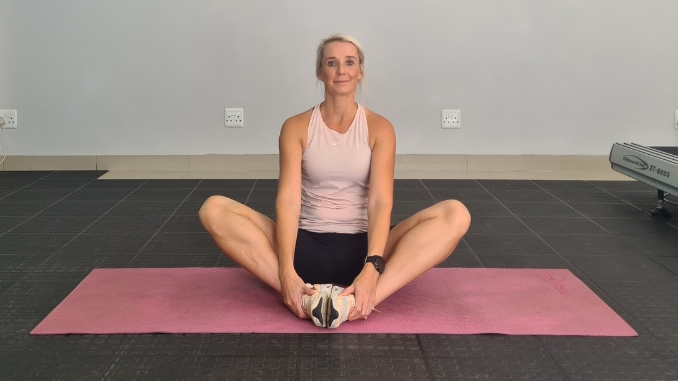
2. Garland Squat
Begin in an upright standing position with your feet wider than shoulder-width apart, maintaining good alignment in your upper body. Press your palms together in a prayer position at chest height. Bend your knees and hinge through your hips to move into a deep squat. Lower your hips downward as you press your elbows between your knees for a gentle stretch in your inner thighs. Sit as deeply as you are able, while evenly distributing your weight across both heels. Hold this position for several deep belly breaths, in through your nose and out through your mouth. Relax and raise back up to return to the starting position.
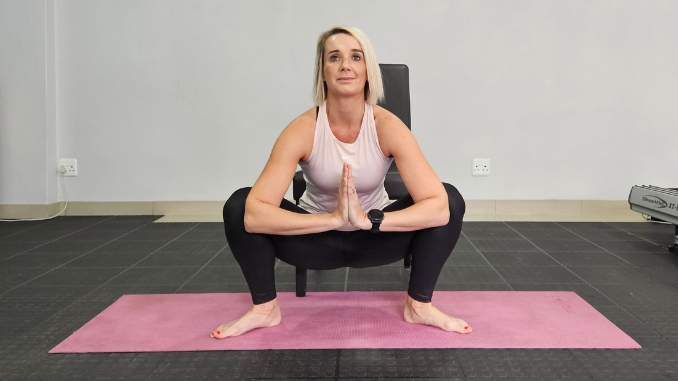
3. Pigeon Pose
For this gracilis stretch, begin in a four-point position. Move into a straight arm plank position, maintaining proper alignment with your head, shoulders, hips, and legs. Lift one knee toward your shoulder, cross your foot under your opposite hip, and lower your knee to the side. Lower your upper body onto your bent leg and rest your forehead on your arms, stretching your hip area. Hold this position for 10 deep belly breaths, in through your nose and out through your mouth. Repeat the movement with the opposite leg.
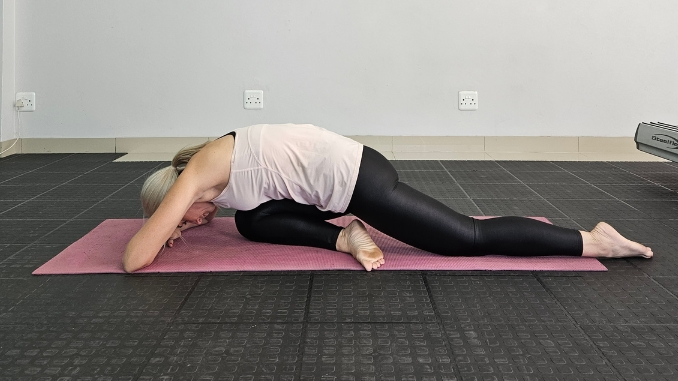
4. Low Lunge
Begin in a kneeling position with your knees hip-width apart. Take a big step forward with one foot, bringing the front knee at a 90-degree angle. Keep your toes pointing straight ahead as you untuck your back foot. Engage your core and shift your hips forward, squeezing your pelvic floor muscles as you tilt your pelvis back. Hold the position for several deep belly breaths, in through your nose and out through your mouth. Relax and return to the starting position. Repeat the movement on the opposite side.
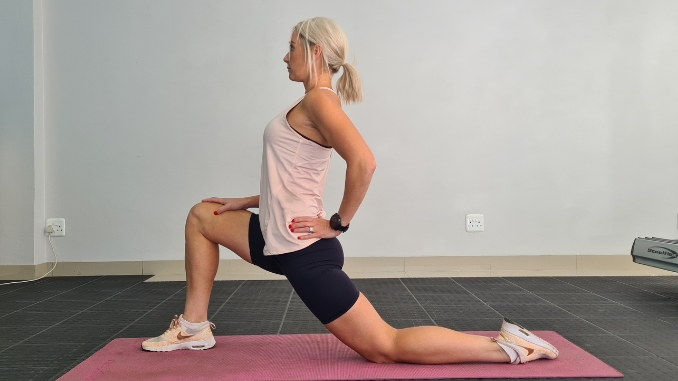
Other Gracilis Stretching Exercises
1. Standing Gracilis Stretch
2. Seated Adductor Stretch
3. Standing Groin Stretch
4. Side Lying Gracilis Stretch
5. Standing Cross-Legged Stretch
Conclusion
The Gracilis, a key muscle in the inner thigh, plays a crucial role in stabilizing the knee and facilitating leg movement and contributes significantly to overall lower body functionality. Strengthening and stretching exercises targeting the Gracilis are essential for improving posture, balance, and flexibility, ultimately minimizing the chances of injuries while boosting athletic performance.
A particular focus on the groin muscle and hip abductor is crucial, as these areas are prone to muscle spasms and tightness. By incorporating exercises that engage the Gracilis, individuals can alleviate strain on the knee, enhance hip adductor mobility, and mitigate discomfort associated with prolonged sitting or standing.
This mindful approach to thigh health supports proper joint function and plays a pivotal role in preventing muscle spasms and promoting an active, comfortable lifestyle. Whether performing routine tasks or participating in physical activities, prioritizing the health of the Gracilis positively impacts overall physical fitness and quality of life.
Everyone wants toned and shapely legs, but did you know that an impactful routine designed to tighten your thighs has lots of other benefits? Get started today! Check out this Tone & Tighten Thigh Workout!

